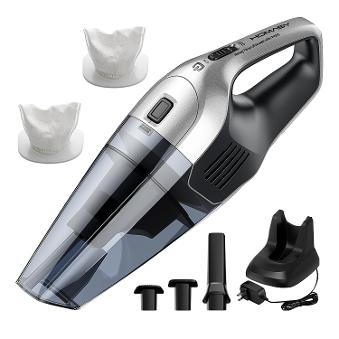How long should a vacuum last?

Although creating a vacuum is really an incredibly complex concept, the subject can be simplified down to a single question and a single rule:
THE QUESTION:
What are you trying to do?
THE RULE:
Don’t make any mistakes!
Hiding within this simplified concepts are myriad pitfalls requiring a good deal of thought and care to avoid, but they can be successfully avoided by staying within the concept. Keep in mind that, in a practical sense, nobody in his or her right mind creates a vacuum without a reason. Before getting into reasons, though, we need a simple definition. A vacuum is any pressure below atmospheric and that requires something to keep it in (chamber) and a means of reducing the pressure (pump.)
Enlarge Image
So, what we are talking about here is removing gas molecules from a chamber. Figure 1 shows the mind-numbing number of molecules involved. Whatever the process or product that requires a vacuum, there is a maximum amount of molecules that can exist within the chamber if the product or process is to successfully produced or carried out. The first stages, then, of answering the “What are you trying to do?” question is to define a product/process and a target pressure. At this point, the single rule comes into play in that every component and procedure involved in creating the vacuum must be chosen or done properly or the result will be failure to achieve the target pressure.
This can be restated as Danielson’s Dilemma because the complexity of a vacuum system is greater than the complexity of the sum of its parts.
ANATOMY OF A PUMPDOWN
In general, a vacuum is created by starting with air at atmospheric pressure within a chamber of some sort. A vacuum pump is attached to the chamber with the intention of removing enough gas molecules from the chamber to reach the maximum allowable number (pressure) to satisfy the target pressure established under the question, “What am I trying to do?” Since air is a mixture of gases, it will be necessary to consider the relative gas composition later in this discussion, so the composition of atmospheric air is shown in Figure 2.
Enlarge Image
At atmospheric pressure, the gas molecules are very close together; and as they are in constant motion, the distance between molecule-to-molecule collisions is very short. This distance is known as mean free path.
As molecules are removed by the vacuum pump, the distance between collisions becomes greater and greater. Figure 3 shows the mean free path as a function of pressure. As molecules are removed, there are fewer other molecules for a given molecule to collide with the distance becomes longer and longer as the pressure is reduced. This concept, though fairly obvious, is important in understanding vacuum technology in that the behavior and flow of molecules is almost the whole subject.
Enlarge Image
When the pumpdown is started at atmospheric pressure, the gas molecules are in a flow regime condition called viscous flow. This means that the constant molecule-to-molecule collisions will cause the population of molecules within a given volume to even out immediately when some molecules are removed. This behavior is what most people think of as the effects of pressure differential since there seems to be a driving force to move molecules. This can be seen more clearly as we begin to remove molecules from the chamber.
Starting from atmospheric pressure, molecules are most commonly removed with a mechanically actuated positive displacement pump of some sort. This can be anything from an oil-sealed rotary pump to an oil-free diaphragm, piston, or scroll pump. The overall idea is the same in that the gas in the chamber to be evacuated is expanded into a fixed volume where it is isolated and then mechanically compressed to a point where it is expelled into another stage or directly into the atmosphere. The exposure and subsequent isolation of the molecules in the chamber to the fixed volume continues at a high rate and more and more molecules are removed.